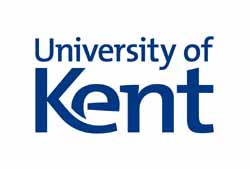
Variant Modeller

 |
VarMod Variant Modeller |
 |
|
Modelling functional effects of non-synonymous variants |
| Submission Details | |||
| Email: | mark@wass.com | ||
| Unique Submission identifier: | vm53679d298872d | ||
| Description: | Example | ||
| Uniprot Accession: | P24941 | ||
| Query Seq: | MENFQKVEKIGEGTYGVVYKARNKLTGEVVALKKIRLDTETEGVPSTAIREISLLKELNHPNIVKLLDVI
HTENKLYLVFEFLHQDLKKFMDASALTGIPLPLIKSYLFQLLQGLAFCHSHRVLHRDLKPQNLLINTEGA IKLADFGLARAFGVPVRTYTHEVVTLWYRAPEILLGCKYYSTAVDIWSLGCIFAEMVTRRALFPGDSEID QLFRIFRTLGTPDEVVWPGVTSMPDYKPSFPKWARQDFSKVVPPLDEDGRSLLSQMLHYDPNKRISAKAA LAHPFFQDVTKPVPHLRL | ||
| Analysis Summary |
| The table below shows the machine learning VarMod prediction and a summary of the features used to make the predictionThey are colour coded to indicate how relevant each feature is likely to be when considering if the variant affects the protein functionThe sections below provide detailed information relating to sequence conservation, ligand binding sites and protein-protein interactions.The structural data can be used to investigate the structural environment of the variants and consider how this mayhave an effect on protein function. |
|
|
| Sequence View - Conservation Data |
| 1 | 10 | 20 | 30 | 40 | 50 | 60 | |||||||||||||||||||||||||||||||||||||||||||||||||||||||
| Sequence | M | E | N | F | Q | K | V | E | K | I | G | E | G | T | Y | G | V | V | Y | K | A | R | N | K | L | T | G | E | V | V | A | L | K | K | I | R | L | D | T | E | T | E | G | V | P | S | T | A | I | R | E | I | S | L | L | K | E | L | N | H | |
| Conservation | |||||||||||||||||||||||||||||||||||||||||||||||||||||||||||||
| Binding site | |||||||||||||||||||||||||||||||||||||||||||||||||||||||||||||
| Interface | |||||||||||||||||||||||||||||||||||||||||||||||||||||||||||||
| Variants | |||||||||||||||||||||||||||||||||||||||||||||||||||||||||||||
| 61 | 70 | 80 | 90 | 100 | 110 | 120 | |||||||||||||||||||||||||||||||||||||||||||||||||||||||
| Sequence | P | N | I | V | K | L | L | D | V | I | H | T | E | N | K | L | Y | L | V | F | E | F | L | H | Q | D | L | K | K | F | M | D | A | S | A | L | T | G | I | P | L | P | L | I | K | S | Y | L | F | Q | L | L | Q | G | L | A | F | C | H | S | |
| Conservation | |||||||||||||||||||||||||||||||||||||||||||||||||||||||||||||
| Binding site | |||||||||||||||||||||||||||||||||||||||||||||||||||||||||||||
| Interface | |||||||||||||||||||||||||||||||||||||||||||||||||||||||||||||
| Variants | |||||||||||||||||||||||||||||||||||||||||||||||||||||||||||||
| 121 | 130 | 140 | 150 | 160 | 170 | 180 | |||||||||||||||||||||||||||||||||||||||||||||||||||||||
| Sequence | H | R | V | L | H | R | D | L | K | P | Q | N | L | L | I | N | T | E | G | A | I | K | L | A | D | F | G | L | A | R | A | F | G | V | P | V | R | T | Y | T | H | E | V | V | T | L | W | Y | R | A | P | E | I | L | L | G | C | K | Y | Y | |
| Conservation | |||||||||||||||||||||||||||||||||||||||||||||||||||||||||||||
| Binding site | |||||||||||||||||||||||||||||||||||||||||||||||||||||||||||||
| Interface | |||||||||||||||||||||||||||||||||||||||||||||||||||||||||||||
| Variants | |||||||||||||||||||||||||||||||||||||||||||||||||||||||||||||
| 181 | 190 | 200 | 210 | 220 | 230 | 240 | |||||||||||||||||||||||||||||||||||||||||||||||||||||||
| Sequence | S | T | A | V | D | I | W | S | L | G | C | I | F | A | E | M | V | T | R | R | A | L | F | P | G | D | S | E | I | D | Q | L | F | R | I | F | R | T | L | G | T | P | D | E | V | V | W | P | G | V | T | S | M | P | D | Y | K | P | S | F | |
| Conservation | |||||||||||||||||||||||||||||||||||||||||||||||||||||||||||||
| Binding site | |||||||||||||||||||||||||||||||||||||||||||||||||||||||||||||
| Interface | |||||||||||||||||||||||||||||||||||||||||||||||||||||||||||||
| Variants | |||||||||||||||||||||||||||||||||||||||||||||||||||||||||||||
| 241 | 250 | 260 | 270 | 280 | 290 | ||||||||||||||||||||||||||||||||||||||||||||||||||||||||
| Sequence | P | K | W | A | R | Q | D | F | S | K | V | V | P | P | L | D | E | D | G | R | S | L | L | S | Q | M | L | H | Y | D | P | N | K | R | I | S | A | K | A | A | L | A | H | P | F | F | Q | D | V | T | K | P | V | P | H | L | R | L | |||
| Conservation | |||||||||||||||||||||||||||||||||||||||||||||||||||||||||||||
| Binding site | |||||||||||||||||||||||||||||||||||||||||||||||||||||||||||||
| Interface | |||||||||||||||||||||||||||||||||||||||||||||||||||||||||||||
| Variants | |||||||||||||||||||||||||||||||||||||||||||||||||||||||||||||
| Structural Analysis |
|